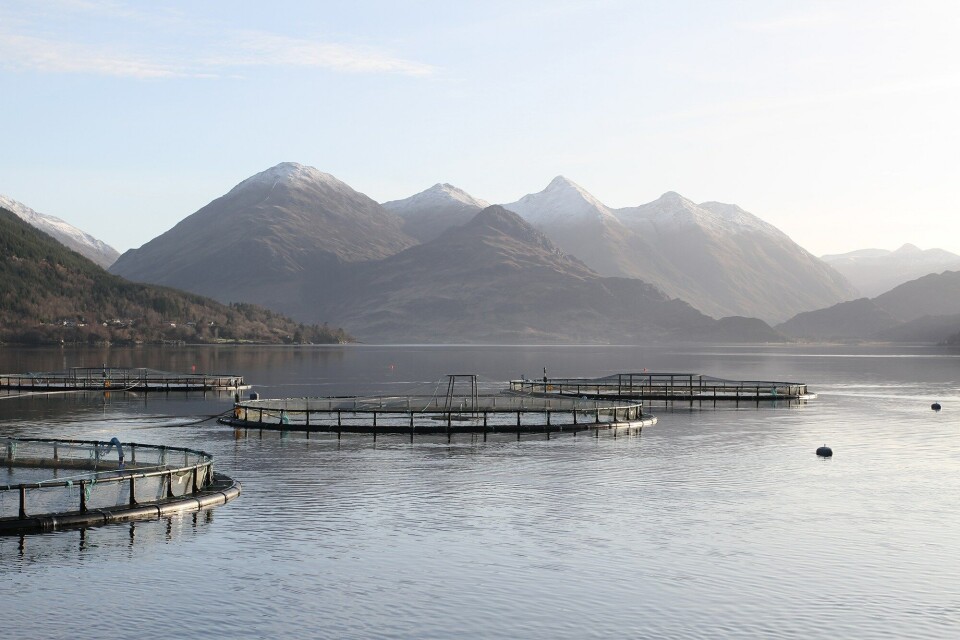
Scots eye up 15,000+ tonne increase
The Scottish salmon industry’s long-stated ambition to expand seems to be coming to a head, with a raft of applications for new sites and expansions of existing sites being lodged over the course of the last month.
This week Cooke Aquaculture Scotland lodged an application for a 2,500 tonne site off the island of Westray, in Orkney, while earlier in the month Marine Harvest applied for a 2,500 tonne site off the the island of Rum. The applications follow hot on the heels of one by Kames, for a 5,000 tonne farm in the Sound of Jura, which was made in December, while the West Highland Free Press has mentioned a community consultation taking place on Skye last week regarding two 2,500 tonne capacity organic sites, run by Organic Sea Harvest.
Moreover Marine Harvest has also lodged plans this month to increase the capacity of its Loch Duich site (pictured) to 2,500 tonnes - should all applications be granted permission it would mean an increase in capacity of over 15,000 tonnes for the Scottish industry, not to mention a welcome increase in employment opportunities in some very isolated parts of the country.
Speaking about the Rum site, Steve Bracken, Business Support Manager for Marine Harvest Scotland, told Fish Farming Expert: “It’s a very exciting site, but we’ve only applied for a licence from SEPA so far – it makes sense to initially measure the potential impact the site would have on the sea bed, as it’s in an MPA [Marine Protected Area], then we’ll take it to the planners in March or April.”
The decision to go ahead with the Rum application follows the company carrying out a scoping study to assess the level of community support on the island last year.
“Without backing from the community we wouldn’t have gone ahead,” Steve says.
And he hopes that most of the site operatives will come from on the island.
“We’re looking to employ 6 or 7 residents of Rum as we want the workforce to be based on the island,” he says.
If the site gets the go-ahead, it will be the company’s 4th ‘open water’ location – following construction of new sites off Barra, Muck and Colonsay – and would probably be stocked with its first fish in 2018.
“The site lies off the northeast of Rum, it’s an open water location and will be exposed, but we’ll make sure we use the best equipment on it,” Steve adds.
However, he believes that such sites are proving their worth.
“Our recent sites off Muck and Colonsay have worked out well,” he explains.
And, despite a number of biological challenges experienced by the company last year, he is convinced that they have turned a corner.
“We had good results by the end of last year and this year looks very promising,” he reflects, “while our application for the new feed plant [at Kyleakin on Skye] goes in front of the planning committee on 21st February.”























































